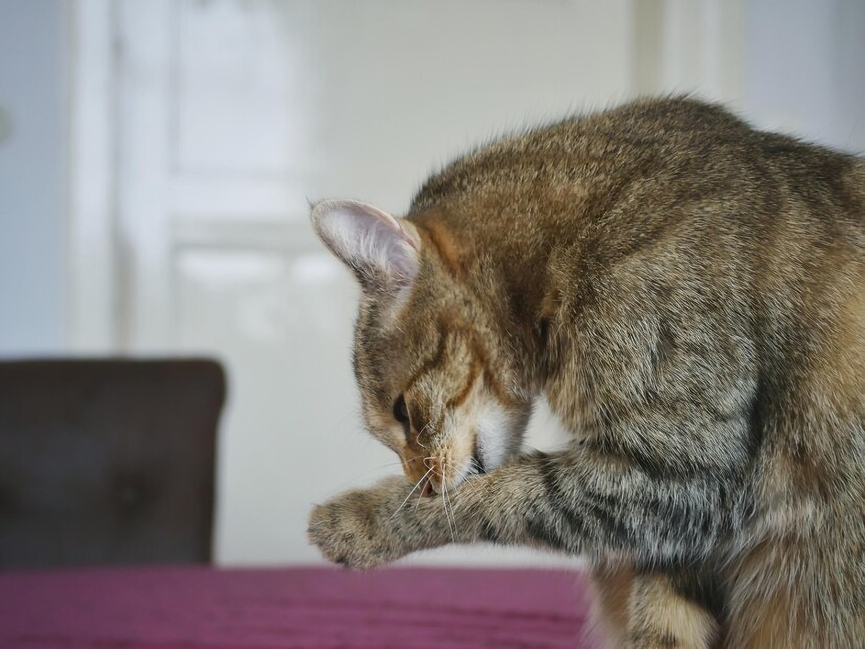Ragdolls are famous for going limp in your arms and following you from room to room — a reputation rooted in a generally calm, social nature, though individuals vary. But here’s the truth: friendliness is a breed tendency, not a guarantee.
Originating in the 1960s, Ragdolls were selectively bred for docility; however, their personality still depends on genetics, early socialization, and environment. This matters because temperament influences how well a Ragdoll gets along with kids, other pets, and even apartment living. In this guide, we’ll show you in plain steps:
- What “friendly” looks like in daily life
- How to test it before adoption
- A 30-day plan to grow a calm, affectionate companion
Breed Origins & How They Shape Temperament
Developed in the 1960s in California by breeder Ann Baker, the Ragdoll cat came from a small group of unusually calm, people-oriented foundation cats. Through selective breeding, traits like tolerance for handling, low reactivity, and strong human attachment were emphasized — giving rise to the “floppy” charm Ragdolls are known for today.
But while genetics sets the potential for this gentle temperament, environment and early socialization decide how it unfolds. Two kittens from the same litter can differ widely — for example, one handled daily may accept nail trims, while a sibling with little handling startles at touch. When adopting, look beyond the breed label and ask:
- Parent temperaments (1–2 traits each)
- Socialization log (weeks 2–10: handling, sights, sounds)
- Exposure history (kids, men with hats/beards, vacuums)
- Handling tolerance test at visit (touch paws/ears → observe)
If you only ask one question, make it about early socialization — it’s the biggest predictor of a friendly Ragdoll.
Core Personality Traits That Make Ragdolls Stand Out
Ragdolls are affectionate; many are content as friendly followers — but a subset can trend clingy without structure. Selective breeding and early handling give them hallmark traits: a calm, tolerant nature, a signature “floppy” response when held, and steady, people-oriented companionship.
In daily life, that means they’ll greet you at the door with a soft chirp, trail you from room to room, and lounge nearby, yet still enjoy their own space.
In practice: Kid-friendly? Often, yes — if children are taught gentle handling. Energy? Low–moderate with playful bursts.
Not typical: high-octane zoomers that demand hour-long fetch sessions. Ragdolls thrive in homes that value gentle affection, predictable routines, and shared but balanced company. Let’s see how that friendliness shows up with people.
Recommended Post
Are Ragdoll Cats Friendly With Humans (Adults, Kids, Seniors)
Most Ragdolls form deep, calm bonds with humans. With adults, they’re typically loyal companions who enjoy quiet company — I often see calm adults curl beside visitors as if they’ve known them for years. With respectful children, they can be patient playmates, provided handling is supervised and short at first.
For seniors, their low–moderate energy and love of routine — think short play after breakfast, lap time in the evening — make them soothing daily companions.
To test friendliness before adoption:
- Approach: Sit sideways, hand relaxed. Friendly cue: brief look and slow approach within 30–60 s. Caution: stiff posture, tail tucked.
- Tolerance: Stroke cheeks/shoulders 3–5 s. Friendly cue: soft blink, leaning in. Caution: tail lashing, ears flattened.
- Noise: Drop a pen softly. Friendly cue: orient and recover within 2–3 s. Caution: bolt or hide for over a minute.
Friendliness also matters when other animals are in the home.
Are Ragdolls Friendly with Other Pets?

Many Ragdolls adapt well to multi-pet homes — but success depends on slow, structured introductions and respect for individual temperaments.
With other cats, use scent swaps, short visual meetings, and gradual supervised sessions over 6–8 weeks. Week 1–2: eating on opposite sides of a closed door without vocalizing = green light. Week 3–4: parallel play (wand toy vs. dog on mat) without fixating = progress. Regression sign: stalking, pinning, or hard staring over 5 seconds → step back a phase.
With calm, cat-friendly dogs, train the dog first (“leave it” command), then progress from leashed viewings to short, calm interactions over 4–6 weeks. Create cat-only vertical spaces and a gated room with litter, water, and a bolt-hole. First sniff through a cracked door? One second, treat, door closes.
Around small pets like rabbits or guinea pigs: no free-roaming overlap — ever. Supervision means eyes-on within arm’s reach. Friendly doesn’t mean instant friendship — patience, planning, and safety turn peaceful coexistence from hope into habit.
Recommended Post
Training & Socialization for Maximum Friendliness
Training isn’t just tricks — it’s the fastest way to a friendlier Ragdoll. These cats are highly receptive to short, positive sessions that pair a clicker or verbal marker (“Yes!”) with high-value rewards like tiny treats or short play bursts. Keep sessions 3–5 minutes, 2–4 times daily, and start small:
- Recall: say their name + “come,” reward every approach.
- Handling tolerance: reward calm acceptance of gentle stroking.
- Visitor desensitization: let guests offer treats from a distance, no forced contact.
Progress in 30-day micro-goals, adding new challenges gradually. Consistency, patience, and rewards turn even shy Ragdolls into affectionate, confident companions.
Recommended Post
Potential Behavior Challenges
Ragdolls are usually calm and affectionate, but their strong social bonds can lead to clinginess, selective responsiveness, or boredom-driven mischief if needs aren’t met. Clinginess feels sweet — until the 6 a.m. yowls; structure helps both of you.
Prevent it with progressive alone-time: start with 30–60 seconds behind a door → 2–3 minutes → 5 → 10, pairing each step with a food puzzle set down just before you leave.
Aim for two interactive play blocks daily (10–12 minutes each) plus one food puzzle or foraging mat. Stubborn recall? Use 3–5 minute clicker sessions with high-value treats, twice a day.
Destructive scratching or excessive meowing? Redirect with cat trees, puzzle feeders, and short, engaging play morning and night. If new vocalizing or destruction appears suddenly, or hiding lasts over 24 hours, rule out pain (dental, GI, UTI) with a vet before training.
Think structure + stimulation: meet their social and mental needs, and you’ll prevent most Ragdoll behavior problems before they start.
You Might Also Like
Final Thoughts
Ragdolls tend to be calm, people-oriented cats — a friendly baseline shaped by breeding and grown into a steady companion through socialization, enrichment, and good care. Affection, tolerance, and sociability are breed tendencies, not guarantees.
Your best predictor? The “probability ladder”:
- High — socialized breeder kitten + verified handling history (video/logs).
- Medium — adult rescue; schedule trial period with a decompression room.
- Lower — chaotic history; plan a 60-day runway and early vet check for stress-related issues.
Before choosing: 1) assess your lifestyle fit, 2) ask breeders/rescues for socialization details, and 3) plan a 30-day bonding routine. Give a Ragdoll time, structure, and affection, and you’ll likely end up with a purr-heavy evening on the couch after a 5-minute wand game.

Hi, I’m Abir Ahamed—a writer, editor, and proud cat lover with a passion for feline welfare. I use my words to educate, inspire, and advocate for responsible pet care. Based in Bangladesh, I bring a unique perspective to Cats Question, hoping to help cat lovers make informed, compassionate choices.






